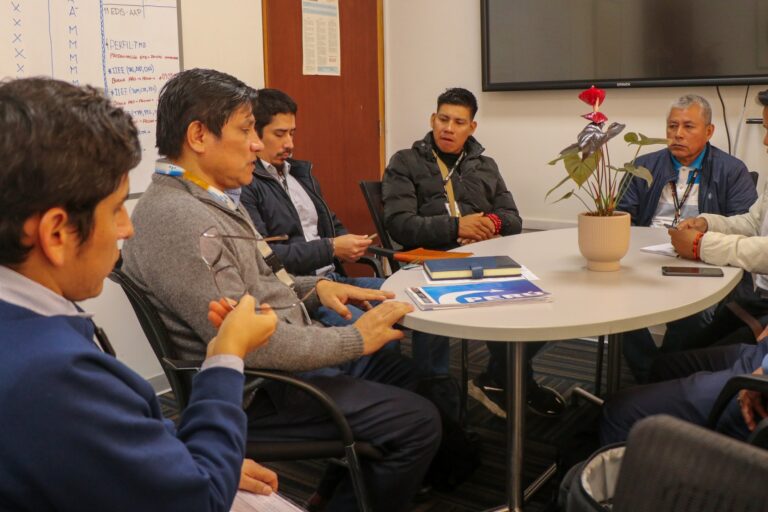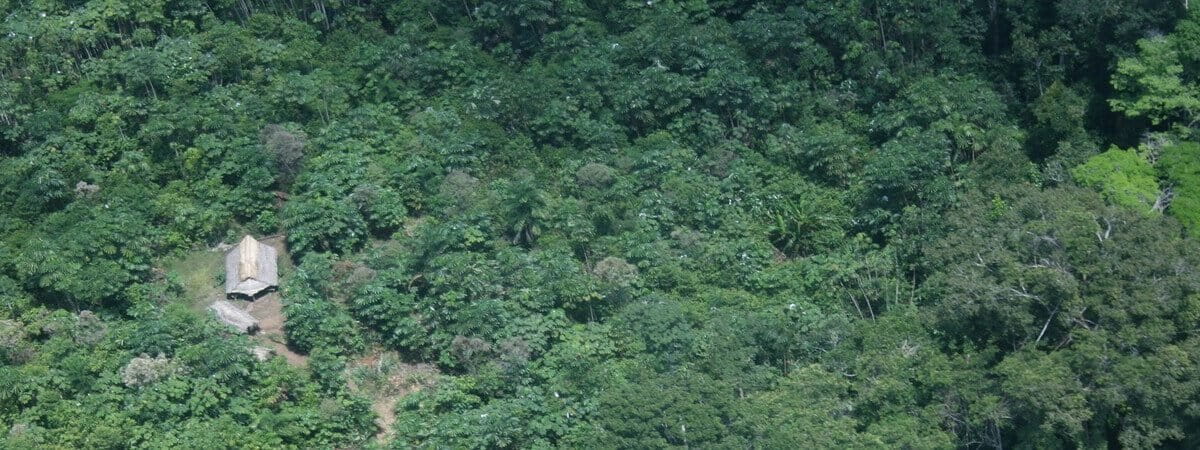- The proposed Yavarí Mirim Indigenous Reserve would have protected an area a fifth the size of Ireland in the Peruvian Amazon, home to several Indigenous communities living in isolation.
- Last week, a government commission voted 8-5 against the proposal, despite ongoing threats against the Matsés, Matis, Korubo, Kulina-Pano and Flecheiro Indigenous peoples.
- A new study will have to be developed and proposed to the commission, which could take several more years, critics of the outcome said.
- In the meantime, they warned, forest concessions in the area could expand and groups tied to mining, logging and drug trafficking could force the isolated groups off the land.
Officials in Peru last week voted against a proposal to create an Indigenous reserve in the country’s Amazonian region, where isolated tribes face threats from logging, mining and drug trafficking. The decision will likely delay efforts to protect them by several years and could lead to their displacement, critics said.
The proposed Yavarí Mirim Indigenous Reserve would have protected 1.17 million hectares (2.9 million acres) of Amazon Rainforest in the Loreto region, an area a fifth the size of Ireland that’s home to several Indigenous communities living in isolation. A commission reviewed anthropological evidence of the communities’ presence in the area but voted in line with the interests of business sectors and forestry concessions.
“With this decision, the Peruvian state has chosen to favor economic and criminal interests over the [isolated Indigenous peoples’] right to live in peace and dignity,” the Regional Organization of Indigenous Peoples of the Peruvian Amazon (ORPIO) said in a statement after the vote. “This represents a historic setback in human rights and an assault on the Amazon and its Indigenous peoples.”
The commission voted eight against and five in favor.

The Matsés, Matis, Korubo, Kulina-Pano and Flecheiro Indigenous peoples live in isolation on a border area with Brazil, leaving longhouses, gardens, tools and remains of campfires as anthropological evidence of their existence.
For years, Peruvian officials deniedreports that the groups were real. It wasn’t until 2018 that they issued an official decree recognizing them. Today, there an estimated 640 people in their communities.
But full legal protection for the territory only comes with a demarcated reserve, advocates said.
The process involves filing a study with the Multisectoral Commission for Indigenous Peoples in Voluntary Isolation and Initial Contact (PIACI), part of the Ministry of Culture. The commission reviews arguments for why the reserve is necessary and where the boundaries would be drawn. If approved, officials have to create a management plan and other policies to protect the communities.
The Ministry of Culture already recognizes eight Indigenous and territorial reserves in Peru, three of them at least partially in Loreto.
ORPIO and the Interethnic Association for the Development of the Peruvian Rainforest (AIDESEP) first proposed the Yavarí Mirim Indigenous Reserve in 2003. But the studies kept getting rejected or postponed.
This time around, the commission postponed the meeting in January. Even after members of ORPIO met with President Dina Boluarte and her cabinet, the meeting was postponed again in June, leading to criticism from advocacy groups that the process had become corrupt and politicized.
The country’s PIACI law requires officials to create conditions for protecting isolated peoples, ORPIO leaders said.
“It’s necessary to categorize the reserve, it is absolutely necessary,” ORPIO legal specialist Federico Guaneryes Contreras Espinoza told Mongabay. “Not only from a population-protection perspective, but also because it is an obligation of the state.”
The Ministry of Culture couldn’t be reached for a request for comment for this story.

Indigenous advocates also said the commission favored economic interests in Loreto, most notably forestry concessions that would no longer be legal if an Indigenous reserve were approved.
During last week’s vote, officials from the National Forest and Wildlife Authority (SERFOR) reportedly defended existing and proposed concessions within the boundaries of the proposed reserve, according to people present at the meeting. It was a determining factor in the outcome, critics said.
“SERFOR legitimized illegality and undermined its role as a guarantor of rights and conservation,” the ORPIO statement said.
SERFOR didn’t respond to a request for comment.
Between 2011 and 2024, the proposed reserve lost 436 hectares (1,077 acres) of rainforest, according to ORPIO’s Territorial Information and Planning Center. Advocacy groups warned that the deforestation could spread more quickly now that the reserve has gone through a vote and a new study won’t be presented for several years.
They also noted that the communities haven’t developed defenses against common diseases, which would pose a serious health risk to them should there be contact in the future.
Indigenous rights advocates have to conduct a new study to propose to the commission, which is a long, difficult process — especially if political forces continue to stand in the way, several people working on the latest study told Mongabay. In that time, the forest concessions could expand and groups tied to mining, logging and drug trafficking could force the isolated groups off the land.
ORPIO and other Indigenous rights advocates says they’re still optimistic and won’t stop campaigning for the creation of the reserve.
“We will continue fighting,” Roberto Tafur Shupingahua, president of the Federation of Native Communities of the Tapiche Blanco Basin, told Mongabay. “We will continue providing the necessary support for this [reserve].”
Banner image: A structure built by one of the isolated communities in Loreto, Peru. Image courtesy of ORPIO.
Peru’s rare peatland swamps at risk as illegal gold mining expands
FEEDBACK: Use this form to send a message to the author of this post. If you want to post a public comment, you can do that at the bottom of the page.
